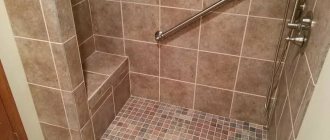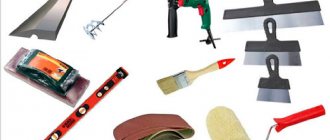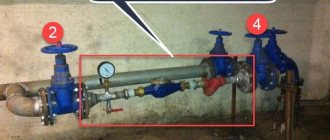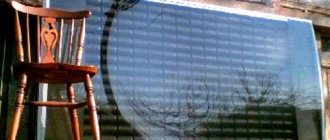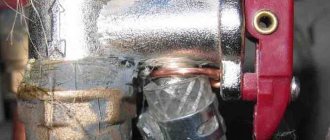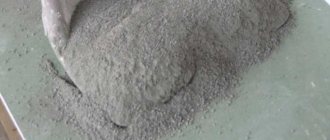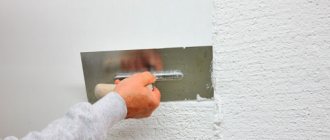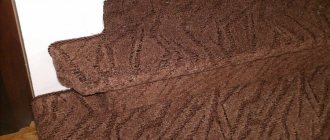Author: Color Laboratory
Filling your home with comfort, harmony and beauty is what every person strives for. A material such as ceramic tiles will help make the floor in your apartment clean, practical and original. This is a durable and strong material that is wear-resistant. But despite these positive qualities, the consumer may encounter some problems.
Due to the fact that the tile has a porous and rough surface, it takes a long time to dry, and caring for it takes a lot of time.
Over time, tiles (even expensive ones) lose their attractive appearance. Spots, scratches and chips begin to appear on its surface.
The matte finish of the tiles is often damaged. Having a porous structure, the material, like a sponge, absorbs moisture and dirt. It can be quite difficult to remove the resulting plaque without damaging its surface.
Tile varnish will help keep the room fresh and clean for a long time. It will protect the surface from damage and the design from fading.
Varnish for ceramic tiles: composition and features
- The tile protectant is made on an acrylic base with the addition of ceramic chips. It is a substance such as acrylic that makes the coating durable and wear-resistant.
- After drying, the surface acquires an attractive shine and aesthetic appearance.
- This varnish is suitable for both floor coverings and wall tiles.
- The product is completely safe for health.
- After complete drying, the varnish retains its transparency and does not give a yellow tint.
Tips for use
If you are going to varnish Tuscan tiles, terracotta tiles or any other highly absorbent surfaces, you should avoid using varnish until the regular adhesive has completely hardened. Otherwise, the tiles are in danger of fading. In some cases you will have to wait several months. If installation is carried out on dry screeds using cement-based adhesives, the waiting period is radically reduced.
The varnish must be applied in a thin and even layer. For this operation, you can use a piece of fabric. The main thing here is to prevent sagging, which is especially visible on a light-colored surface.
Note! Do not apply paint and varnish material to a surface whose base is poorly insulated from moisture.
Advantages
The varnish has the following positive characteristics:
- Protects the surface from mechanical damage.
- Makes maintenance easier.
- Protects designs, shades and colors from fading and fading.
- Helps to update old tiles, which significantly saves the budget.
- Prevents the formation of bacterial plaque.
Flaws.
- The product contains chemicals, direct interaction with them can negatively affect human health.
- Therefore, it is worth taking care of the protective equipment and strictly following the recommendations given by the manufacturers.
- If you violate the application technology, you can irreversibly damage the material.
Removing the old layer is a complex and labor-intensive process.
Step-by-step instruction
Before starting work, you need to prepare the base so that the paint does not peel off later. It is advisable to first wash the old tiles with warm water and soap, and then degrease them with an alcohol composition. After this, let it dry, putty or sand it, and only then start preparing the paint. Two-component compositions must be mixed according to the instructions, adding a solvent or hardener.
Next, apply masking tape if you plan to apply several colors. The first layer is applied to the wall. After it dries, you can re-coat the walls. If you plan to apply a pattern or painting to the tile, one base coat is sufficient.
It is advisable not to use the bathroom until all work is completed, so as not to disturb the adhesion of the paint and the base with moisture.
Working with varnish
Before you begin the main work, you need to perform a number of additional steps.
Preparatory stage. It is important to ensure that you have all the necessary tools in advance. You will need:
- Varnishing agent;
- Primer;
- Roller;
- Brushes of different sizes;
- Plastic tray;
- Fine-grained sandpaper;
- Solvent for removing varnish from instruments;
- Detergent;
- Foam sponges;
- Soft material.
First stage. You should take the work at this stage responsibly, since the quality of the varnishing work will depend on this.
It includes preparing the work surface and performing the following steps:
- It is necessary to thoroughly clean the base from dust and dirt.
- The surface should be degreased with alcohol or acetic acid.
- Before performing varnishing work, it is worth performing light sanding. Fine-grained sandpaper works well for this.
- After this procedure, you should wash the floor and then dry it thoroughly.
- The surface must be primed.
- Then let it dry thoroughly and sand again.
- Afterwards, thoroughly clean the surface from dust and debris and begin repair work.
Main stage. Can be considered final. It involves treating the surface with varnish.
- Since the varnish dries quickly, it must be applied with quick and precise movements.
- To do the work you need to use brushes; their size should be selected based on the area of the room being treated.
- The product must be applied in an even layer.
- Excess material should be removed immediately with a dry cloth.
- All subsequent layers must be applied after the varnish has completely dried.
Anti-slip porcelain tiles
Anti-slip porcelain tiles should also be used where people will walk barefoot and the floor might get wet. Bare feet will easily slide on smooth tiles, and if it is also wet, then falls, bruises and injuries will be difficult to avoid.
You can't help but think about stairs - a place where people often fall and slip, even on a super matte and textured surface. Anti-slip tiles and porcelain tiles will be excellent cladding for stairs. In addition, thanks to the bright colors of the riser (the so-called covering under the step), you can once again draw attention to the stairs and protect visitors from falling.
Industrial porcelain tiles must be made with an anti-slip coating - these are places where increased safety requirements must be taken into account. In accordance with workplace regulations and the Accident Prevention Regulations (German UVV and DIN 51130), floor coverings must have special anti-slip properties. Therefore, depending on the area of application of floor ceramics, special attention must be paid to these properties. Floor coverings for work and production areas are subject to special requirements depending on their purpose and area of use. Using special methods, floor tiles are tested according to certain criteria and divided into groups of values. Anti-slip flooring is divided into groups, designated R9 - R13.
| Value group | Angle of inclination at which the specified group of values can be used |
| R 9 | >3–10 low clutch friction value |
| R 10 | >10–19 normal clutch friction value |
| R 11 | >19–27 increased clutch friction value |
| R 12 | >27–35 high clutch friction value |
| R 13 | >35 very high clutch friction value |
Anti-slip tiles or porcelain tiles are ordinary matte porcelain tiles with a number of anti-slip measures: notches, special notches, a special coating with an anti-slip effect, the application of a rough texture, a special protruding pattern. The variety of types of anti-slip “tricks” is countless. Their main advantage is that they increase the friction force on the floor and thereby reduce the risk of people falling and getting injured.
For anyone who cares about the health and safety of their visitors and themselves, it is necessary to remember about anti-slip porcelain tiles and anti-slip tiles. For any questions, you can contact our manager by phone or via feedback.
Varnish consumption
If the surface to be treated is porous, then to obtain a durable coating it is necessary to apply two or three layers.
The consumption of the product is 100-200 g/sq.m., but when applying a second layer it increases by another 100 g/sq.m.
Classification of tiles intended for laying in wet areas where people walk barefoot
Regular anti-slip tiles can be hard on bare feet due to their roughness. Therefore, a separate classification has been developed for areas where people walk barefoot:
- A – tiles for locker rooms and barefoot passage areas in medical institutions
- B – perfect for swimming pools and showers
- C – for dangerous areas in the pool: steps and slopes
Safety precautions
Before you begin painting work, you must carefully read the attached instructions and study the safety precautions.
It is important to provide yourself with protective equipment such as goggles, gloves and a respirator.
These measures must be observed both at the preparatory stage when grinding the surface, and at the main stage when treating the surface with varnish.
Panels
Wall panels can be installed on top of old tiles. The apron area is hidden under glass (skinali), allowing you to create a bright design without dismantling the finish. A photograph or an unusual texture (plaster, limestone) is often placed under the heat-resistant coating. Under transparent protection, voluminous wallpaper or a reproduction of a painting look impressive.
Tiles under glass Source remontbp.com
You can hide all the old tiles under the panels without removing them. Small slatted components are fixed with glue or liquid nails. Large parts are mounted on a special frame, under which the dilapidated design is hidden. The design hides 5-10 cm from each wall, so it is only suitable for a large kitchen or bathroom.
Decorative panels repeat the texture of the material from which they are made. Models made of MDF are wood chips pressed under pressure, covered with laminate or veneer on top. Suitable for use in the kitchen.
How to hide old tiles Source stroy-podskazka.ru
PVC slabs imitate the surface of stone, expensive tiles and mosaics. Vinyl types are used in the bathroom and in the cooking room. To prevent the plastic near the stove from melting, the apron area is protected with thermal glass.
Useful tips
It is important to remember that tiles can only be processed a month after they have been laid. Tile adhesive takes quite a long time to dry, so you should be patient and wait just that long.
After carrying out work on treated tiles, it is better not to walk for at least 24-28 hours.
- After varnishing work, contact with the tiles will become much easier.
- It will become easier to wash, and it will dry in a matter of minutes.
- It will become less porous, roughness will go away, and thus a dirty, difficult-to-clean coating will not form.
- The tiles will delight you with a beautiful shine and brightness of tones, and the interior will be filled with cleanliness, novelty and freshness.
By observing all recommendations and safety precautions and strictly following the instructions included with the varnish, you can easily and simply make repairs.
Then there will be not only joy, but also pride in the repair work carried out independently in your home.
Dye selection
Paintwork materials are chosen not only as a decorative coating. Its level of adhesion to the surface is considered. If the ability is low, the ceramic tile paint will not last long and will soon begin to flake off. We must not forget that ceramics are smooth and it is difficult to achieve high tenacity.
Ceramic paint must withstand the negative effects of external factors (high humidity, contact with water and detergents, temperature fluctuations).
The decorating layer can be matte or glossy (semi-matte, semi-gloss). Matte hides defects, emphasizes the relief pattern of the tile surface, and enhances the feeling of nobility in interior design. Its solemnity is enhanced by gloss. A shiny surface visually expands the space. Gloss is not able to hide defects or chips.
Sometimes only the seams between the tiles are painted with special paints and varnishes.
Tile paint has an average consumption: 100-250 g/m2. The exact figure depends on the type selected by LMB.
Alkyd enamel
Painting tiles with alkyd enamel does not require large financial investments. The composition is based on alkyd varnish. The coating is not afraid of exposure to aggressive phenomena: it resists humidity and cleaning agents.
If we talk about the problematic aspects of the alkyd composition, then this is the short service life of the decorating layer, poor tolerance to the UV rays of the sun, and an unpleasant odor. Before painting the tiles, a primer is applied to enhance the adhesion of the paint and ceramics.
PF (Pentaphthalic) and GF (Glypthalic) enamels are part of the group of alkyd enamels and have similar characteristics. The tiles are painted:
- GF-115, PF-115 : Enamel PF-115 White Lacra glossy 20 kg, price 3054 rubles. Enamels GF and PF are used outdoors;
- PF-266 : Enamel PF-266 red-brown 2kg Lacra, price 528 rubles. For indoor use. Hard coating protects floor ceramics well.
The primer used in advance is: FL-03-K, 138, FL-03ZH.
KM polyurethane
Tile paint must have high adhesion and form a durable coating. The polyurethane composition has these characteristics: Tikkurila Temadur 90 / Tikkurila Temadur 90 two-component, high-gloss polyurethane paint, 7.5, price 7590 rubles.
Painting will not be expensive, the material is safe, tolerates temperature fluctuations and humidity. The decorative layer is resistant to abrasive wear and elastic.
It is important to remember that CM does not interact with other dyes. It cannot be used to cover an old layer of a different composition.
Epoxy enamel
Ceramic paint based on epoxy resins forms a highly durable coating layer to be decorated. But it does not have elasticity. Epoxy tile paint is not applied to universal primers; it is used with organic solvents. Recommended for use: EPOHA epoxy enamel Epoxy white gloss 0.7 l 1 kg, price 495 rubles.
KM for working on glass and ceramics
CMs for glass are designed for applying decorative patterns to problematic surfaces: glass and tiles. The dye is expensive, so it does not apply a continuous layer. Glass paints have been developed in an assortment of colors. The brightness of the shades remains for a long time. A clear varnish applied on top of the design increases its service life. The decor on the ceramic surface is not afraid of water. It dries in 3 hours.
Used in work: Set of paints for ceramics without firing Porcelain, 6 colors, 15 ml each, Marabu, price - 1004 rubles; Set of acrylic paints for glass and ceramics Decola 12x20 ml, price – 628 rubles.
Water-based paint for tiles
Acrylic dyes are in demand for coloring ceramics: polyacrylate (AK), alkyd-acrylic (AC). The biggest disadvantage of materials is their high price. This is a paint for tiles in rooms with high humidity levels. A matte or glossy coating is applied to tiles of different shades in the bathroom, bathhouse, sauna, and swimming pool.
KM oil
The main advantage of the paint is its low price. The material is based on drying oil. Today it is rarely used due to its strong unpleasant odor and long drying time. Tile coated with oil paint quickly loses its attractiveness due to the appearance of yellow spots on the surface. Paint MA-15 Expert white 0.9 l, price 139 rubles.
Enamels for car painting
Auto enamels are developed for painting cars. Today their scope of application is much wider. They have good grip on porcelain stoneware surfaces. Therefore, they are increasingly applied to a smooth tile base. Auto paint (auto enamel) acrylic Mobihel (Mobihel) 601 black 0.75 l with hardener 0.375 l, price 930 rubles.
Paint simulators
The composition with polymer and mineral additives gives the surface an original appearance. Natural materials are imitated: brick, wood, stone.
CM imparting special qualities to surfaces
A group of specialized dyes is represented by Zinga paint. Strengthens the protection of ceramics from moisture. Fire-fighting compounds have been developed: “Polistil”, “Countfire”. For rooms with high humidity, KM V33 is recommended. If V33 is considered as a restoration dye (does not tolerate constant exposure to water), then Noxan paint is used to paint the inside wall of the shower stall.
Photo of varnish for tiles
Where is it used?
The tank floor is lined with the following types:
- mosaic;
- rubber tiles;
- glazed clinker.
For wall decoration use:
- mosaic;
- ceramics;
- tile;
- marble.
To finish the paths near the tank, the following types are used:
- sidewalk;
- rubber;
- ceramics.
Overfill protection
Thanks to this protection, the water circulation in the pool is brought back to normal, and the water that leaves the pool does not flood the surrounding area. Such protection can be installed at the edges of the pool. It looks like hidden grooves.
There are three types of protection: “Finnish Coast”, “Zurich Coast” and “Wiesbaden Coast”.
- The Finnish shore is a surface made at an angle and rising from the wall to the overflow, and the manual grip is made in the form of corrugated tiles. Mainly used in large swimming pool complexes.
- Zurich coast. The gutter is located behind the edge of the structure or adjacent to it. The drain is raised. Can serve as a hand grip. Used in public swimming pools.
- The Wiesbaden coast is high-level. With such protection, the overflow channel is flush with the surface of the water. The thickened edge serves as an overflow and hand grip. Protection is used in all types of pools.
- The Wiesbaden coast is low-level. This type of gutter is placed approximately 25-30 cm below the floor level. The absence of a protective grille near the groove allows swimmers to hold on to it, and the beveled slabs ensure that the waves quickly subside.
Options in the production market
Before purchasing tiles, it is important to find out about the most popular manufacturers.
Russian
Among domestic manufacturers, the products of the following companies have proven themselves well:
- “Falcon” - its price varies from 650 rubles/m2;
- “Kerama Marazzi” - its price varies from 850 rubles/m2.
Foreign
The most popular products include products from German manufacturers:
- “Interbau blink” - average price in the range of 2500-3000 rubles/m2;
- "Agrob buchtal" - average price in the range of 1800-3000 rubles/m2.
How to calculate the amount of material?
There are 2 ways to calculate the required amount of finishing material . Before calculating, you should check that all values are converted to the same unit of measurement.
The first method is used for both straight laying and diagonal laying. First you need to calculate the surface area that needs to be covered. To do this, you need to multiply the length by the width. Then calculate the area of one tile in the same way. Then divide the first number by the second, if necessary, round up.
If the surface has areas that do not need to be lined (for example, the pool bowl has a lip that reduces the area around it), their area must be subtracted.
Calculation example:
- The length of the area around the pool is 18 m, the width is 2 m. The section of the bowl that cuts into the surface is 1 m by 3 m. The size of one tile is 30 cm by 30 cm or 0.3 m by 0.3 m. The surface area will be 18* 2 = 36 m².
- It is necessary to subtract the area of the bowl area that extends onto the floor - 1 * 3 = 3 m².
- The area to be covered is 36–3 = 33 m².
- The area of one tile is 0.3*0.3 = 0.09 m².
- Divide the surface area by the result - 33/0.09 = 367.
- You need to add about 10% for trimming, in the case of diagonal laying - 15%. Total 367 + 36 = 403 or 367 + 55 = 422. This is the required amount of material.
The second method is used only for direct installation . Divide the length and width of the surface by the length and width of the tile, respectively, rounding the values up. Then multiply the first number by the second.
If you make the calculation using the previous input data in the second way, you will get the following results. We divide the lengths: 18/0.3 = 60 – this is the number of tiles arranged in length. Then - the width: 2/0.3 = 6.7, taking into account rounding - 7. The required quantity is 60 * 7 = 420 (excluding the protrusion of the bowl).
In order to exclude the projection of the bowl from the calculation, it is necessary to calculate the amount of material required for this area, and then subtract this number from the previous result. It turns out: 3/0.3 = 10 (length), 1/0.3 = 3.3.
When calculating using this method, you need to round down . Quantity to be subtracted: 10*3 = 30. Total quantity – 420 – 30 = 390. Due to rounding, measurement results vary slightly.
Basic requirements for tiles in an outdoor pool
The use of tiles in an outdoor pool places serious demands on the technical data of ceramic products:
- minimal water absorption;
- frost resistance;
- UV resistance;
- strength;
- durability;
- abrasion, etc.
For example, the popular mosaics of the Porcelanosa Group are made of glass. The main advantages of glass mosaic are:
- zero water absorption coefficient;
- UV resistance, so the color of the paint remains unchanged;
- heat and frost resistance;
The durability of the material allows the use of mosaics for flooring even in areas with high traffic.
Creativa glass mosaic has zero water absorption and is ideal for finishing pool bowls, both indoor and outdoor. The performance characteristics of the mosaic are confirmed by certificates from manufacturers who work within the ISO quality system and produce products that meet their high requirements. The Creativa brand offers various collections of glass and ceramic mosaics, which allow you to create a unique design solution for a pool bowl in almost any style, various configurations and shapes.
Mosaics for swimming pools and bathrooms Porcelanosa Grupo | Mosaics for swimming pools and bathrooms Porcelanosa Grupo |
Mosaic for swimming pools and bathrooms METAL ACERO | Mosaic for swimming pools and bathrooms METAL BRICK ACERO |
